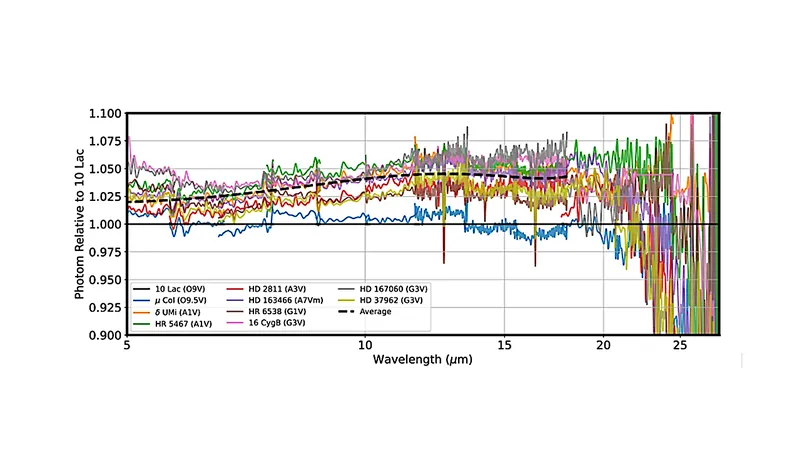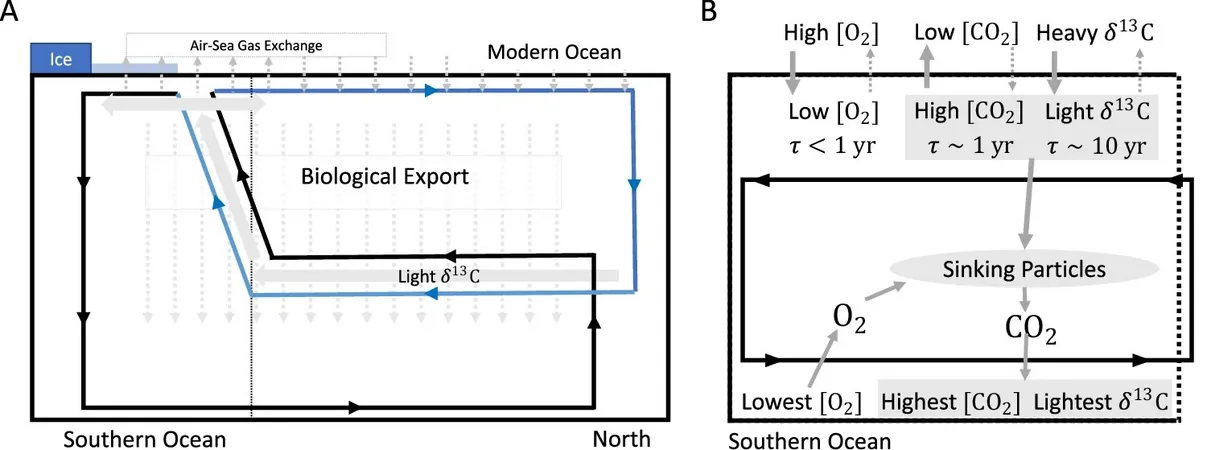
Revolutionary Update to James Webb Space Telescope's MIRI MRS Calibration – What You Need to Know!
2024-10-06
Significant Update to Calibration
In a significant advancement for astrophysics, the MIRI (Mid-Infrared Instrument) team has announced a crucial update to the photometric calibration reference files for the Medium Resolution Spectrometer (MRS). This enhancement is now active under the CRDS context version 1263, marking a pivotal moment in how astronomers can analyze cosmic phenomena.
Changes in Calibration Methodology
Previously, the calibration process relied heavily on the O9V star 10 Lac for measurements at wavelengths below 18 µm. However, in this latest update, a more robust methodology has been introduced. The team now utilizes the average normalization of ten different standard stars across the O, A, and G spectral types, vastly improving the reliability of their photometric data.
Implications of the Update
The implications of this update are profound. All calibrations will see a brightness increase of approximately 2% at shorter wavelengths and up to 5% at longer wavelengths. This enhancement effectively tightens the agreement between the MRS and MIRI Imaging modes to within 1% over the 4.9 to 18 µm wavelength range, a feat that promises to elevate the quality of observations made by the James Webb Space Telescope (JWST).
Challenges in Longer Wavelengths
Notably, when it comes to longer wavelengths, specifically in MRS Channel 4, the calibration presents challenges due to insufficient signal-to-noise ratio from the calibrator stars. As a result, the calibration for wavelengths beyond 18 µm continues to rely on a combination of an infrared-bright asteroid and a young stellar object, with the stellar calibration normalization merging at the Channel 3/Channel 4 boundary.
Further Reading and Inquiries
For those keen to delve deeper into these modifications, a comprehensive overview of the changes and the methodology behind the photometric calibration for MIRI MRS can be found in an upcoming publication by Law et al. 2024.
Astronomers and researchers utilizing JWST are encouraged to reach out to the MIRI team via the JWST Help Desk for any inquiries regarding these vital updates. The enhancements are anticipated to lead to groundbreaking discoveries in various fields including astrobiology, astrochemistry, and general astronomy, as researchers better grasp the complexities of the universe through this state-of-the-art telescope. Stay tuned, as the cosmos continues to reveal its secrets!






 Brasil (PT)
Brasil (PT)
 Canada (EN)
Canada (EN)
 Chile (ES)
Chile (ES)
 España (ES)
España (ES)
 France (FR)
France (FR)
 Hong Kong (EN)
Hong Kong (EN)
 Italia (IT)
Italia (IT)
 日本 (JA)
日本 (JA)
 Magyarország (HU)
Magyarország (HU)
 Norge (NO)
Norge (NO)
 Polska (PL)
Polska (PL)
 Schweiz (DE)
Schweiz (DE)
 Singapore (EN)
Singapore (EN)
 Sverige (SV)
Sverige (SV)
 Suomi (FI)
Suomi (FI)
 Türkiye (TR)
Türkiye (TR)